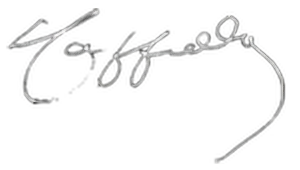Caricatures
According to Barbara Stentz, a caricature is a striking and partisan drawing whose purpose is to provoke, shock, ridicule, or stigmatize a situation or a person. The word caricature is often synonymous with editorial cartoon or satirical drawing. To simplify, we will refer to all these genres by the same term: caricature. The caricature has three main objectives:
- Entertainment,
- Political and social commentary,
- Propaganda.
As we will see, Cappiello left us with numerous caricatures of these three types.
Entertainment
Right from the end of his studies, in 1896, he published his first album of drawings of Livorno’s high society in summer attire: “Lanterna Magica, Estate” (Magic Lantern, Summer). At that time, Livorno was a renowned seaside resort, which allowed Cappiello to find interesting characters to sketch. He creates realistic representations of them, without exaggeration or coarseness. His style is stripped down: simple lines with a light watercolor wash.
In the spring of 1898, he came to Paris to see his brother. He tells us about his early days as a Parisian caricaturist:
“…I was pleasantly wasting my time in Livorno when, in 1898, I formed the plan to come to Paris, not to work, but to see my brother, who was at the Stock Exchange. I wanted to spend at least a month with him, time enough to get to know your capital. I sometimes went to the Stock Exchange; I saw some good faces there that I amused myself by drawing. These caricatures, which my brother showed to his friends, caused their astonishment. I was congratulated and I savored the joy of this success, so to speak, within the family, without thinking of expanding the circle of my experiences and acquaintances, without aspiring to more resounding glory. Moreover, my father died around that same time; I returned to Livorno. But Paris had conquered me—if I had not conquered Paris—and I soon found myself strolling along the boulevards again.”
One day I ran into Puccini there. Exclamations of surprise, handshakes (
We chattered away like people who have a backlog of questions to ask. Puccini asked me what I was up to. “Well, not much, really,” I told him. “I’ve already drawn a few caricatures for friends; I would now like to offer others to the Parisian public. But who should I choose as subjects? I don’t know anyone; and surely, for my attempt to succeed, I’m obliged to choose personalities from Tout-Paris, am I not?”

Appeared in Le Rire N° 191 on July 2, 1898
(Interview with Cappiello in the newspaper *Le Temps*, January 4, 1903; remarks collected by Joseph Galtier)
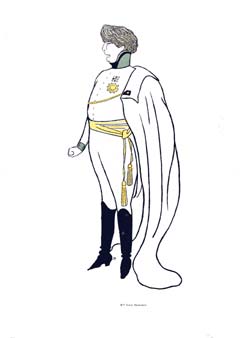
Sarah Bernhardt in L'Aiglon
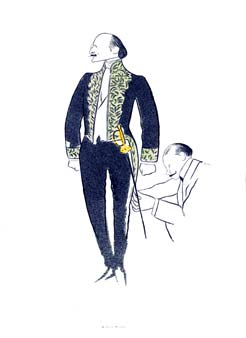
Edmond Rostand "Before the reception
Concurrently, in 1899, Cappiello created polychrome plaster statuettes that are entirely in the style of his caricatures: Princesse de Ligne, Albert Brasseur, Yvette Guilbert, Jeanne Granier, and Réjane.
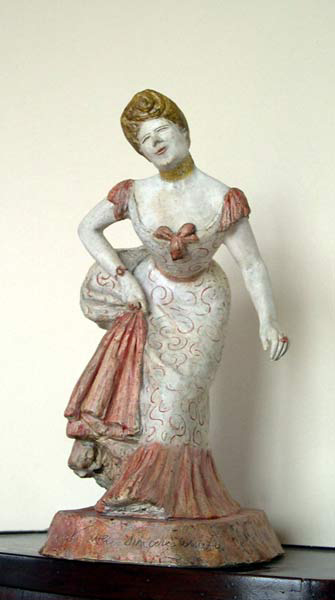
Jeanne Granier
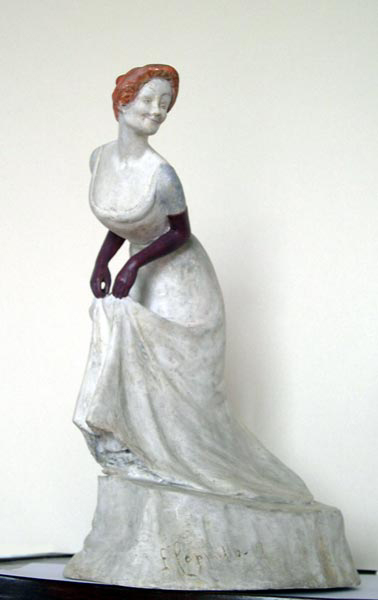
Yvette Guilbert
Cappiello’s predecessors created their caricatures using the technique of accentuating, or even distorting, real physical features. We recall Count d’Argout’s nose, Félix Barthe’s strabismus, and Louis-Philippe’s pear-shaped head. Eventually, readers grew tired of this, and Cappiello’s new style, later adopted in his own way by Sem, was fully appreciated by the public. Let Cappiello present it himself: “To capture the ridiculous aspect of people in a drawing or in writing, it is not necessary to exaggerate it; it is enough to reveal it.”
In his article “How I Capture a Likeness,” published on May 1, 1914, in *Lecture pour Tous*, he writes: “Behind the physical person of the man or woman whose portrait I aspired to create, I glimpsed a kind of phantom, which was their character, their moral person—a sort of more quintessential synthesis of what constituted their personality. The spirit interested me more than the body. The smile impressed me more than the shape of the mouth, the gaze more than the shape of the eye.”
He gives the examples of his caricatures of Jeanne Granier and Marthe Mellot and says: “I drew the eyes of the first with a long, broad line, for although they sparkle with wit and vivacity, they are in reality rather small; and those of the second with a small dot, even though hers are magnificently large. You see that in this way, I drew the gaze much more than the eye itself, and I did not fail in this attempt, since these two effigies have been granted some degree of likeness.”
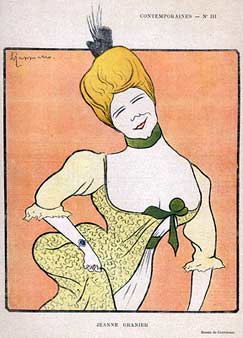
Jeanne Granier
Appeared in
Le Rire N° 213
on December 3, 1898
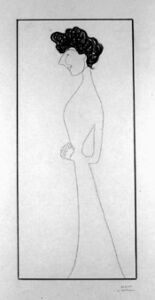
Marthe Mellot at the Théâtre Antoine
Appeared in Nos Actrices in 1899
Preparatory drawing
Social commentary
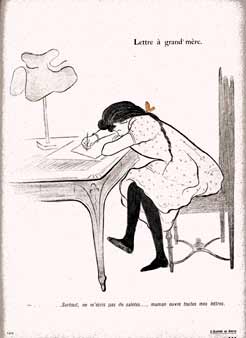
Letter to Grandma "...Please don't write me any dirty things..., Mommy opens all my letters."

"- Come quickly.... he's gone."
Propaganda
At the end of the century, caricature had developed significantly. Not only were the new satirical newspapers too numerous to count, but caricatures were no longer reproduced solely in newspapers and albums; they began to invade walls and fences. Cappiello’s first posters date from 1899. He would devote more and more time to them and abandoned press drawing in 1905. From then on, his caricatures were found only on posters, except during the Great War. His aversion for the enemy prompted him to publish numerous anti-German press drawings in *La Baïonnette* from 1915 to 1917. The style of his drawings changed completely and became very aggressive. This contrasted sharply with Cappiello’s character, which was rather measured.
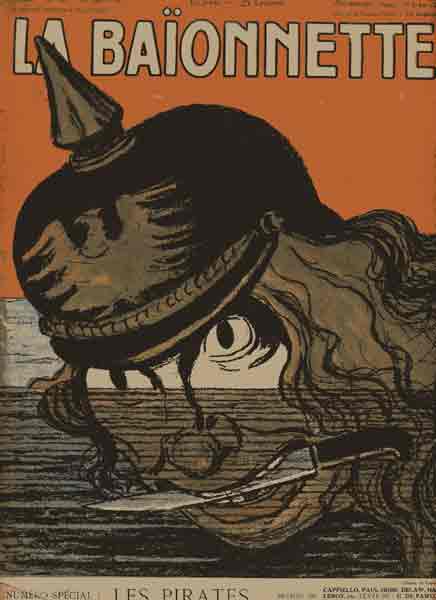
Couverture du numéro spécial de la Baïonnette N°51 du 22 juin 1916 intitulé : « Les Pirates »
The move to posters
Obviously, these actors had no connection with FERRARI pasta, but what audacity in 1900 to associate very well-known artists with a food product. Today, this is a common practice in advertising, but at the time, it was a first.
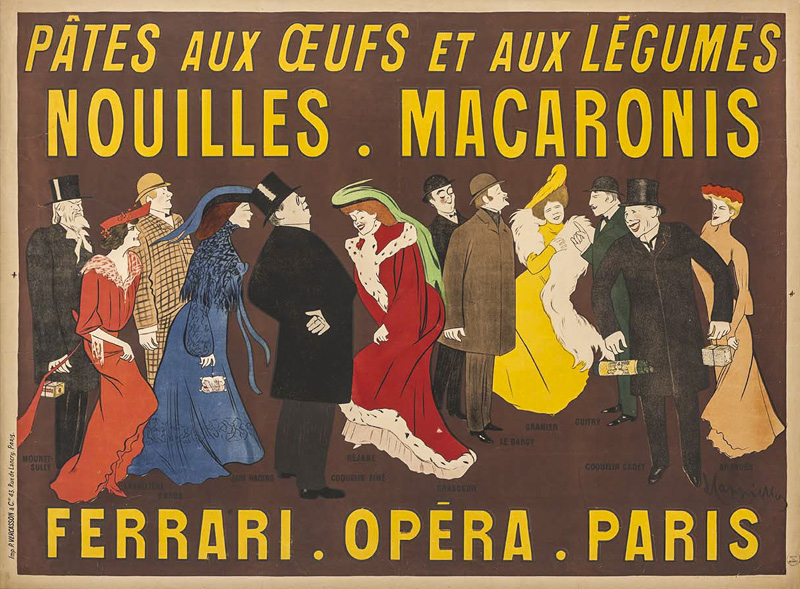
Poster for Nouilles - Macaronis Ferrari (1903)
